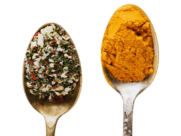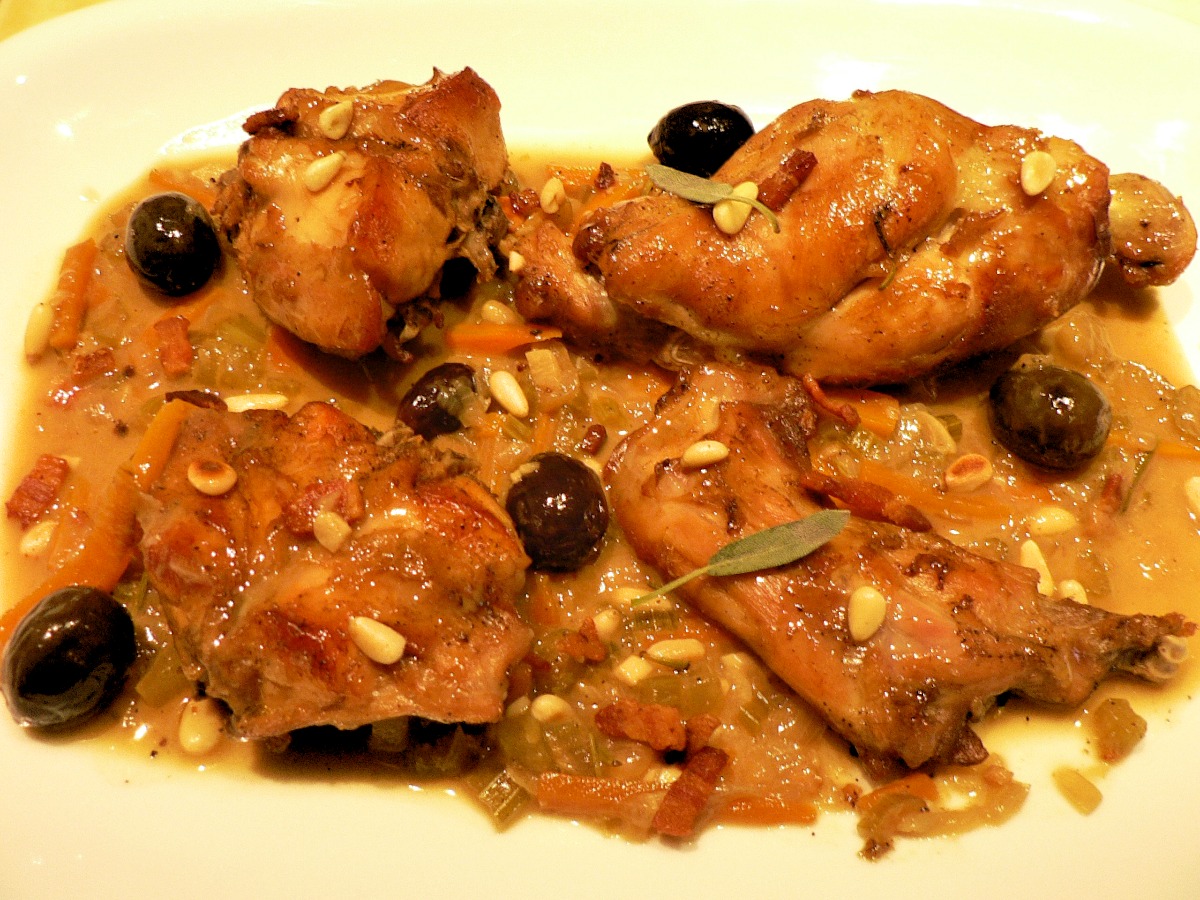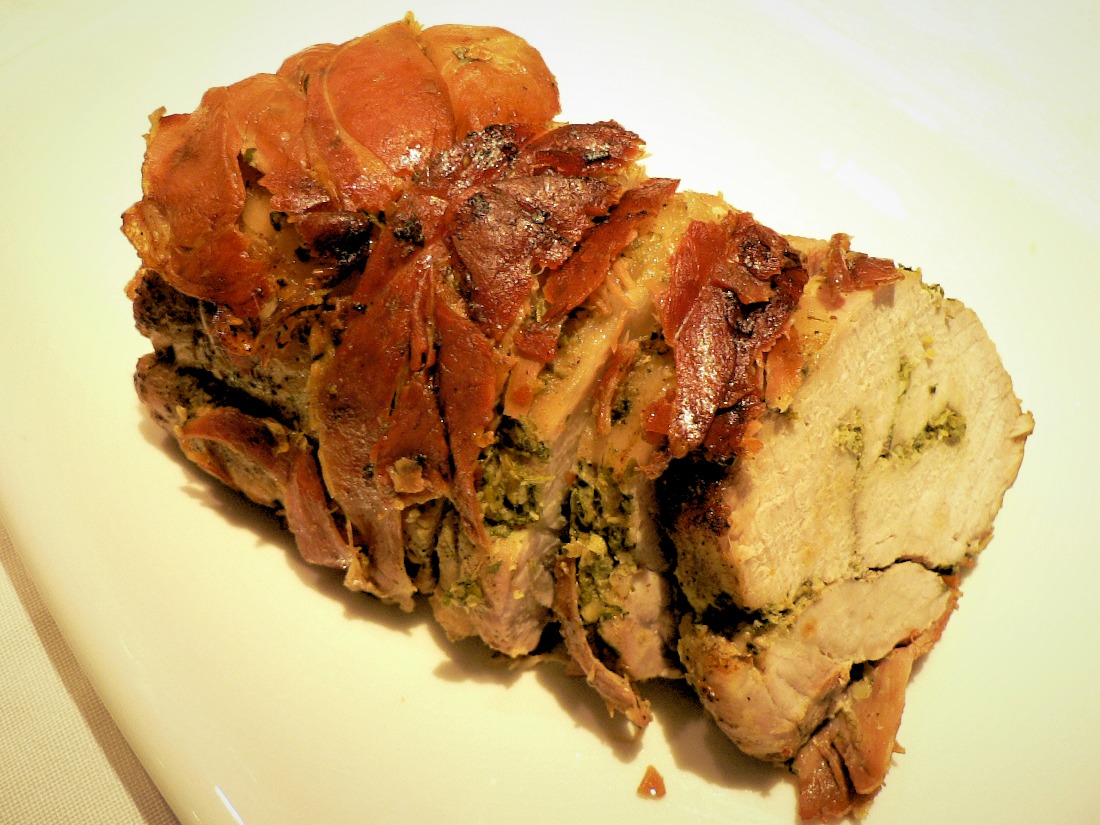Coniglio
Yield: 4 servings
Time: 90 minutes
Ingredients:
- 1 rabbit, about 3 1/2 lbs (1,5 kg), cut up into 10-12 pieces
- 4 oz (115 g) Pancetta or bacon, cut into cubes or strips
- salt and freshly ground pepper
- 1 medium-size onion, finely chopped
- 3 garlic cloves, finely chopped
- 1 medium-size carrot, finely diced
- 1 celery stick, finely diced
- 2 whole sage leaves
- 3 fresh rosemary twigs
- 1 bay leaf
- 1/2 cinnamon stick
- 2 Tbsp olive oil
- 1 cup (250 ml) dry white wine
- 1 cup (250 ml) chicken stock
- 5 oz (140 g) black olives in oil, pitted
- 2 Tbsp pine nuts
- juice of a lemon
Preparation:
Run rabbit pieces briefly under water to remove occasional bone splints. Dry pieces with paper towels. Salt and pepper them. Set aside.
Heat 2 tablespoons olive oil in a saucepan over high heat. Add diced Pancetta or bacon and sauté it until pieces start to brown and render fat. Reduce heat to medium-high, add the rabbit pieces and brown them all over. Place them on a plate as soon as they are done.
Discard most of the fat leaving only about 2 tablespoons of it. Scrape loose all the nice brown bits of the bottom of the saucepan with a wooden spoon. Add the chopped onion, garlic, carrot, celery, sage leaves, and rosemary twigs to the saucepan and sauté them for about 5 minutes or until vegetables start to soften. Add wine, chicken stock and bring it to a rapid boil. Add bay leaf and the cinnamon stick.
Return rabbit pieces to a saucepan and cover them. Reduce heat to low and continue cooking for 30 minutes longer turning pieces once or twice and checking that sauce has not dried out. If necessary add a bit of water or chicken broth. At the end of 30 minutes check for rabbit doneness. Meat should offer no resistance when pierced, be juicy, not dry. Remove rabbit from the saucepan and keep it warm on a plate.
Pass the sauce through a sieve, pressing vegetables with a fork to obtain as much juice as possible. Return sauce to the saucepan. If the sauce seems too thick thin it up with a bit of water or chicken stock. Add black olives and lemon juice. Taste for salt and pepper. Return rabbit to the saucepan and continue cooking it over low heat for 10 minutes further.
In the meantime heat a small frying pan over medium heat. Add the pine nuts and roast them until they start to get golden. Watch them closely so they do not burn. Set them aside to cool on paper towels.
Just before serving sprinkle roasted pine nuts over the rabbit. Serve it accompanied by a crusty Italian bread or creamy polenta.



